Beelink GTR6 Power Consumption and Noise
The unit came with a 19V 120W power adapter. We tried powering the unit via its front USB-C port but that was unsuccessful.
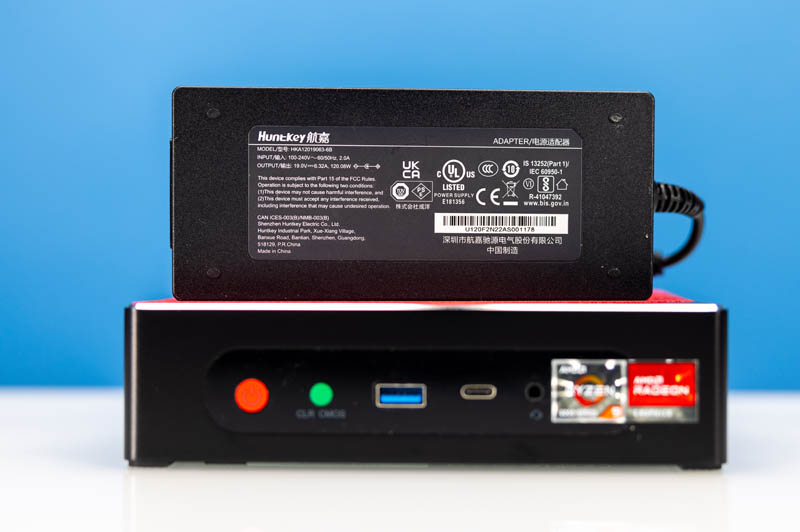
Idle in this unit was generally in the 8-10W range but usually jumped around. Normal loads we would regularly see in the 35-45W range for typical desktop usage. Maximum power consumption was usually in the 70-75W range.
On the noise side, the unit was certainly far from silent. We showed off the noise at idle, then ran a few workloads in the video. The previous generation GTR5 was not silent at all times under idle, this feels louder when it is used, and the fans ramp up a bit easier. If you have a very low-noise floor environment, this may be slightly louder than you would want. Under heavy load, the fans spin up, and there is more noise.
Key Lessons Learned
In terms of key lessons learned, there are certainly a few. This feels like an update, primarily on the graphics side. The CPU performance between the AMD Ryzen 9 5900HX and the AMD Ryzen 9 6900HX was so close that it would not warrant an update itself. Further, with DDR5 memory, the platform cost of the AMD Ryzen 9 6900HX is much higher.
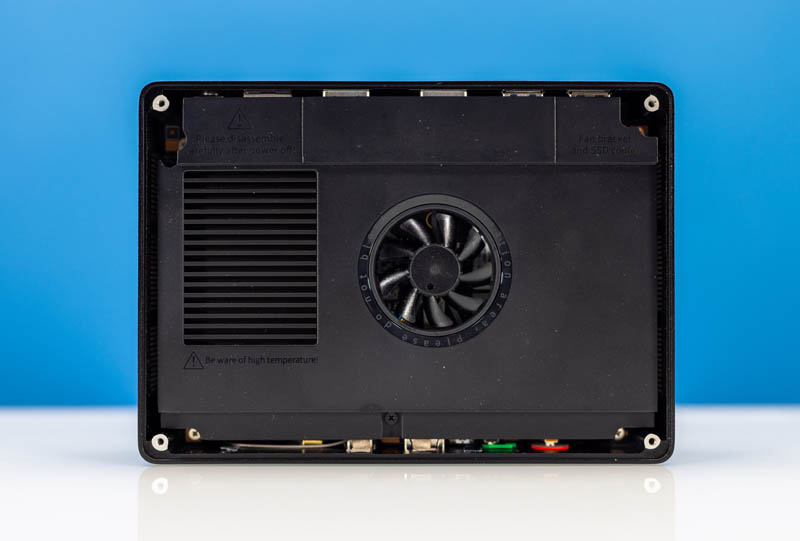
The big upgrade is clearly the GPU side of the processor package. With AMD RDNA 2, we had something that can reasonably play not just video but can also power four 8K displays and even handle some eSports gaming titles. That is helped by using higher-bandwidth but costlier, DDR5 main memory. If you are going to have a single 1080p and not play games on a system like this, the DDR4 AMD Ryzen 9 5900HX (or lower) might be the better buy.
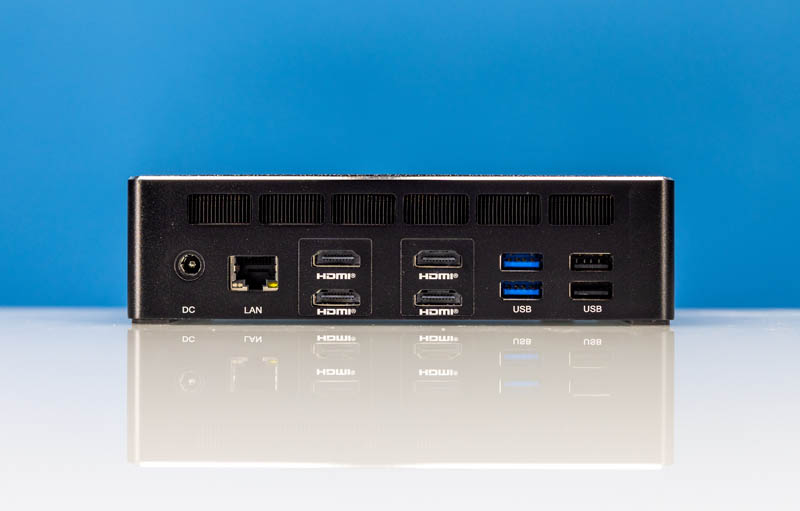
That GPU capability extends to the four HDMI outputs. We know many STH readers use these types of mini PCs to drive multiple displays for digital signage or large workspaces. So for those, this is a big feature powered by the new integrated GPU. The single 2.5GbE LAN port versus the previous generation’s dual port solution is going to turn other folks off.
This ended up being a more interesting system than we thought it would be to review, and the primary reason was the integrated AMD Radeon 680M graphics built into the new AMD Ryzen 6000 series.
Final Words
Overall, the Beelink GTR6 performed well. We thought this was going to be a minor upgrade over the GTR5, but it ended up touching almost the entire system with only a few common features like the form factor.
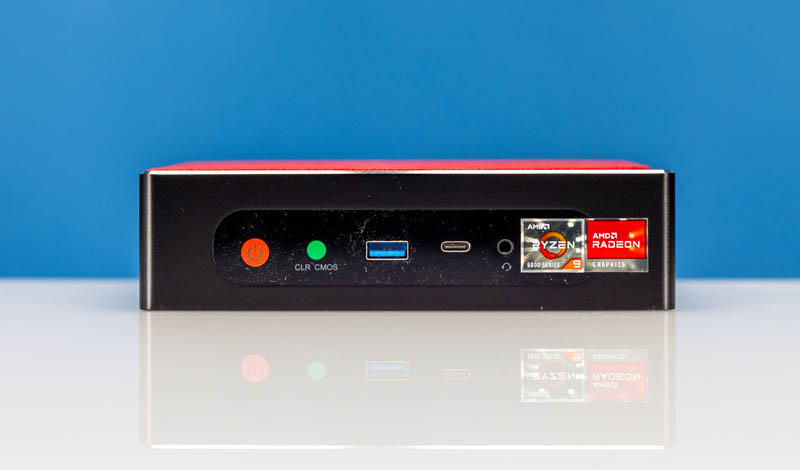
One area that felt off was the SSD. At the time of this writing, Amazon’s premium for a 1TB Kingston KC3000 drive over a 512GB version is only $28. Including the 1TB version would have probably helped close the gap between this system and some of the other AMD Ryzen 6900HX systems in the market. Also, this is a system where if it were 50% bigger but silent, that would be an amazing upgrade. The fans are noticeable, as they are in these fanned mini PCs. It just feels like a bit more heatsink and fan volume would make this a category killer by taming noise beyond anything we have seen.
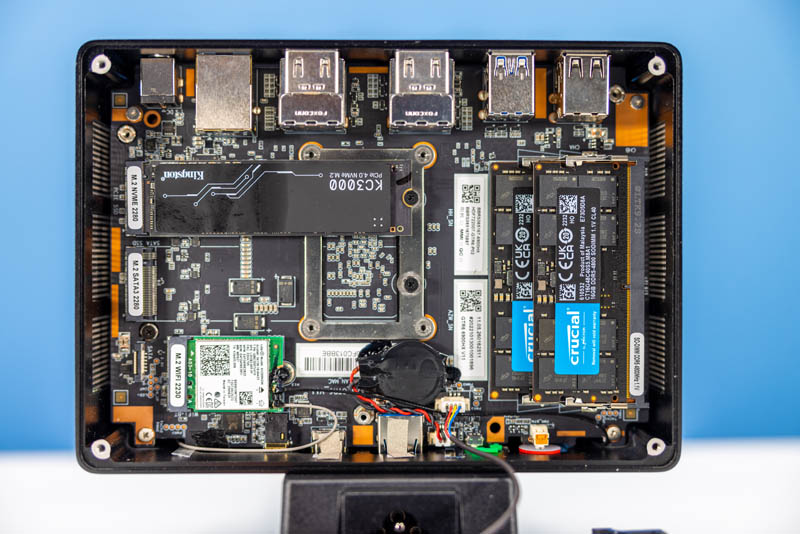
It is hard to complain about the performance of this system and what it offers, especially when it gets to sub $799 pricing. For those looking to install a dGPU into a 1L Project TinyMiniMicro node, this is going to offer a modern processor plus a few generation-old 1L PC dGPU performance in a lower-power package. This is a system where I really like the form factor, and the integrated GPU performance was an enormous leap forward, assuming the price is right.
Since pricing changes so frequently, here is a real-time Amazon pricing widget, but it does not include the coupons that can often be for 15%+ of the list price.



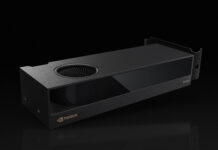
No mention of ECC support or lack thereof?
When it comes to the benchmarks and you have 2 columns for one entry (like with the 7zip compression) could you make the subject CPU a different color so that it stands out more like how you change the subject CPU to black in all the other benchmark scores?
That fan looks shockingly small.
Not sure what these manufacturers are thinking. I had a NUC and a Gigabyte Brix about 8 years ago. Every year I look at newer NUC-type devices but noise only got better.
Noise levels should be a priority and slightly bigger systems with bigger coolers won’t hurt nobody.
Lasertoe:
Yes exactly. No one cares about 1-2 cm thickness, but everyone hears the noise. I don’t understand manufacturers.
Is there any advantage to sticking with a barrel plug on these aside from their BOM cost? Surely a 100W USB-C PD cable would have been a more sensible solution. They could have used the same power brick with a fixed cable but with a USB-C plug instead of a barrel plug (like Lenovo does) and limited tuned it down to 100W at 20V instead of 120W at 19V, or kept to the newest USB-C PD standard using 140W at 28V and give more head room.
I have one of the previous model, GTR5, bought largely on the basis of its review here at STH.
It is an impressive little box. For 10 to 50 watts it shows up full power desktop processors of just a generation back. Adding a 2TB 2.5″ SSD was easy.
The Beelink name makes sense as the fan sounds like an annoyed bee if pushed. This is rarely an issue for me as I use it in my living room to run a TV. Most uses do not trigger the fan. If I push it and the fan bugs me I can set the powersave governor and it shuts up at lower but still good performance. Would I want a bigger box for less fan noise? Yes.
Everything works in Windows, except, well, Windows. I use it in Linux where it serves despite some issues.
With a nice old 4k monitor 60Hz only works with displayport and no sound. This is true of the USB-C displayport mode and the native displayport plug. HDMI only gets 30Hz on native cables, same with conversion to displayport. I spent long hours down the EDID rathole with no resolution. I think the answer is Windows has tables of quirks for monitors and the AMD Linux drivers do not. Perhaps if I got the right EDID I could have made it work.
The WiFi has great throughput but 50ms latency. Works right in Windows. Wired ethernet works all around.
HDMI to a TV, only a few months newer than the 4k monitor, works all around, 4k, 60Hz, sound, everything. Just have to make sure the TV is already turned on when the Beelink boots up or, well, reboot it.
I would anticipate similar results with the GTR6, great performance for tiny power in a tiny box but annoying video issues in Linux. HDMI only is a step back.
Price of these things feels a lot like a robbery. It’s essentially SoC on aboard with a few connectors FFS – no special chipset etc etc. And yet they are pricing it as if it were complete notebook.
One might be better off by waiting for new APUs to come out and then going for mini-ITX board and perhaps adding some periphery (10G Eth etc etc).
True that no AM5 MoBop has 4 GFX outputs, but that’s what the DP MST HUB is about…
I think Ansi is right, but it’s also a problem of them changing prices all the time. At $750 you’d have $225 for the SSD and RAM and then it’s $525 for the rest. CPU, motherboard, case, power supply and Windows 11 Pro for that isn’t too bad. Let’s also take that you don’t have to order and assemble and install Windows so it’ll save time too.
At $850 it’s too much of a premium and I’d agree with Ansi
If you are willing to accept STX systems (size bigger than NUC but smaller than mini-ITX) but want a cheap, small and low noise system Asrocks Deskmini is probably the way to go.
I have one X300 here and with a Noctua NH-L9a noise is pretty good. A newer B660 is available too. AMD X600 & Intel B760 should arrive soon.
It doesn’t look as cool as those small NUC-type systems though.
Just another comment agreeing on the fan situation.
Why can’t they just design these things to make use of a STANDARD format fan (e.g. 120x120x25mm). Sure it’d make the thing slightly larger, but one such fan can be effective for quite a bit of power with very little noise (if the air path is designed properly). And it’s replaceable!!! Users can pick & choose their own fans, for different priorities, like noise or reliablility.
Oh, and as mentioned by another commenter, no ECC support??
No wonder I just stick to my own mini-ITX builds. My current low-power home server has just one 120mm fan, has ECC memory, and is powered by DC supply (M3-ATX).
Great review. I will get a GTR6 Ryzen 9 (or maybe the Ryzen 7) based on this review. Previously your GTR5 review pointed me to the Beelink Mini’s. I purchased multiple SER5 Ryzen 5 5600U’s. Really solid Win11 Pro PC’s. Came with Kingston & Crucial 16GB memory. New SER5’s have 32GB. Mine have NVMe 512GB or 1TB drives. The basement has room for an SSD. Only 1GB NIC but all are connected with 2.5GB adapters connected to a USB and QNAP & Synology network servers. Drives multiple monitors at each desk. Looking forward to the GTR6. Latest I’ve seen on Amaz.: GTR6 Ryzen 9 ($970), GTR6 Ryzen 7 ($585), SER5 Ryzen 5 ($369). Thanks again for the Beelink Mini update.
Its extremely noisy even in idle, I wish reviews actually pointed this out more, because it’s a huge deal